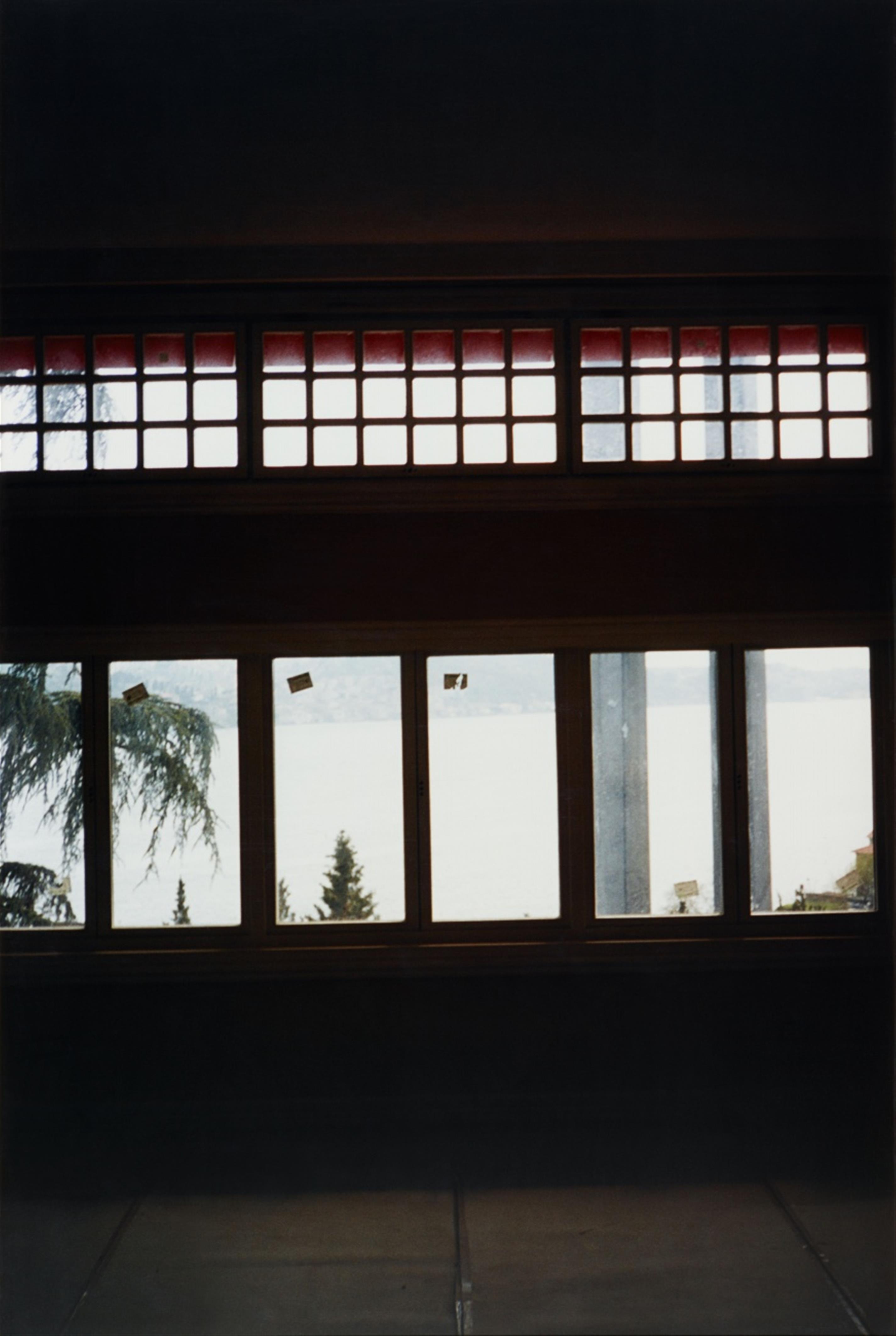Günther Förg
Untitled (Bruno Taut, Istanbul)
2001
Chromogenic print on fibreboard under UV-protective foil. 273,5 x 183,2 cm (frame size). Unique. - In artist's frame.
“Das Fenster zum Bosporus” titles an article in the newspaper Die ZEIT dated 5th January 2001. In this article, Ayhan Bakirdoegen describes the role of German artists and intellectuals in Turkey under Mustafa Kemal Atatür, including that of several architects. Several of them had followed the call of the young Turkish government in order to contribute to the modernisation of the young republic, many - including Bruno Taut - came, however, to escape persecution under the Nazi regime. It is almost as if it was this article which prompted Günther Förg to create the present photograph of the same year. At least, however, it may have been the motive to occupy himself with the topic of modernity in Turkish exile. The architecture of the twenties and thirties played a significant role in the photographic œuvre of Günther Förg. For his photographs, he often sought out the less famous buildings of that era, only known to architectural connoisseurs. However, he avoids any heroisation of modernity - on the contrary: the buildings clearly show that they are past their prime. They often show traces of age or look negelcted, seem to have fallen into oblivion. Since 1995, Förg's works are project-related, for example in the exploration of early Soviet architecture or in his photographs of Italian rationalist buildings. Förg's trip to Turkey in 2001 to the buildings of Bruno Taut, Paul Bonatz, Clemens Holzmeister, and other exiles was one such project. Many photographs from 1937/38 of Bruno Taut's home in Istanbul, a pagoda-like house on stilts above the Bosporus, which does not seem to fit the popular image of modern architecture, but probably caught Förg's attention for exactly that reason, were taken here.
As so often with Förg's architectural shots, the photographic style has something unfinished, snapshot-like about it. Förg uses a 35 mm camera; plunging lines and blurred motifs are intentional or the result of extreme magnification. The picture framing is somewhat askew, the centre point of the symmetrical window front has moved out of centre. Windows are a recurring element in Förg's iconography: The space becomes a surface, characterised by the horizontal structuring of the dark wall surfaces and the light, rhythmic rows of windows. However, the gaze is not directed towards the outside to the impressive panorama, as is typical for Förg, but gets caught up in the branches in front of the window, the background fading into the mist. The backlit shot means that the foreground remains in the dark, the view remaining obstructed. With regard to the above-mentioned situation of exiles in Turkey in the 1930s, this interior with its window to the Bosporus, as Förg interprets it in his photograph, does not convey the impression of a place from which one looked hopefully into the future.
Catalogue Raisonné
WV F.01.F.0525
Provenance
From the artist to the present owner, private collection, Southern Germany

